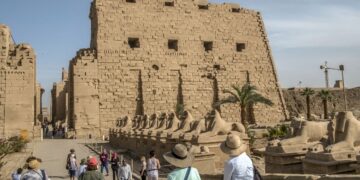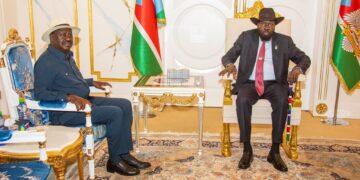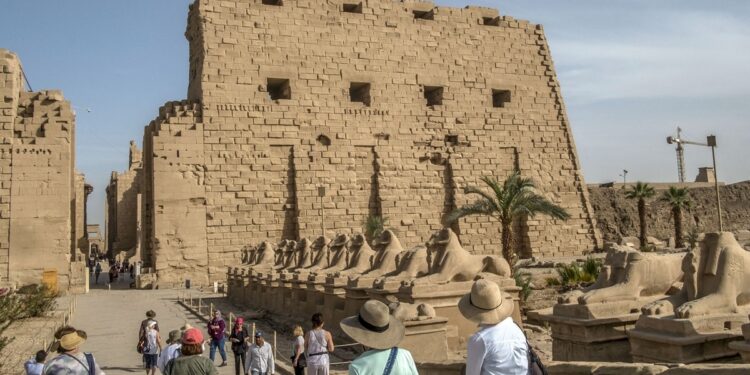Egyptian authorities on Thursday unveiled the renovated ancient promenade in the city of Luxor dating back 3,000 years.
According to Egyptian Egyptologist, Zahi Hawas: “The ‘Rams Road’ was totally buried under dust, it connects Karnak and Luxor Temples, all of its statues were buried.
“It was discovered in 1949 but between 2005 and 2011, we did the most important restoration project which continued under the current Minister of Antiquities Khaled Anany and Mostafa Waziri, secretary-general of the Supreme Council of Antiquities. Now we have more than 1,000 statues some of them are headless.”
Lined with statues of rams and sphinxes on pedestals, the ancient road in Luxor, which sits on the banks of the Nile River and is located about 650 kilometers (400 miles) south of Cairo, stretches for several miles and had been under excavation for more than 50 years.
The ancient walkway known as the Avenue of the Sphinxes, but also dubbed the Way of the Rams and the Path of the Gods connects the famous Karnak and Luxor temples in what was the city of Thebes, which used to be Egypt’s capital of antiques.
Mohamed Abd el-Badei, a top Egyptian Archaeology official, said the oldest ruins along the pathway are six structures built by Queen Hatshepsut, Egypt’s only woman Pharaoh, that date to 1400 B.C.
He said according to hieroglyphics on the walls of one of the temples, the ancient holiday was known as “Opet” and was marked by parades and dancers in celebration of the bounty that the Nile’s annual flooding brought to the fields. There was also a flotilla of sacred boats that made their way to the temple, according to the transcriptions.
This is the latest Government project to highlight the country’s archaeological treasures.
It is also the second flashy ceremony this year to honour Egypt’s heritage.
In April, the Government hosted a procession to mark the transfer of some of the famous mummies from the Egyptian Museum in downtown Cairo to the newly built museum south of the Egyptian capital.
Mustafa Waziri, Secretary-General of the Egyptian Supreme Council of Antiquities added “We still continue excavations works every day and we conduct restoration works with all the heads of Sphinxes which were found, so they can be returned back to their original bodies.”
Egypt has struggled to revive its tourism industry, battered by years of political turmoil following the 2011 popular uprising that collapsed long-time autocrat Hosni Mubarak.
President Abdel Fatah el-Sissi attended the made-for-TV event, a late evening ceremony that nodded to an ancient fall holiday, along with other senior officials.




































